The bald numbers comparing qualifying between the two Silverstones just seven days apart paint a confusing picture. One that just underlines how, within the broad competitive order, the precise line-up on any given day is driven by a near-infinity of factors and in many ways is just a random snapshot.
This week the teams were dealing with a one-step softer compound but the pole lap was 0.85s slower, despite all the prior knowledge last week’s race had given them. Every team went slower than last week, to a greater or lesser degree. But the performance swings within that framework were considerable.
Car performance relative to Mercedes pole
| Team | British GP | Anniversary GP | Difference | |
| Red Bull | 101.21% | 101.20% | 0.01% | Better ↑ |
| Ferrari | 101.33% | 101.72% | 0.38% | Worse ↓ |
| McLaren | 101.75% | 101.91% | 0.15% | Worse ↓ |
| Racing Point | 101.82% | 101.07% | 0.76% | Better ↑ |
| Renault | 102.02% | 101.34% | 0.68% | Better ↑ |
| AlphaTauri | 102.42% | 101.61% | 0.81% | Better ↑ |
| Williams | 102.88% | 102.70% | 0.18% | Better ↑ |
| Haas | 103.39% | 102.47% | 0.92% | Better ↑ |
| Alfa Romeo | 103.39% | 103.85% | 0.46% | Worse ↓ |
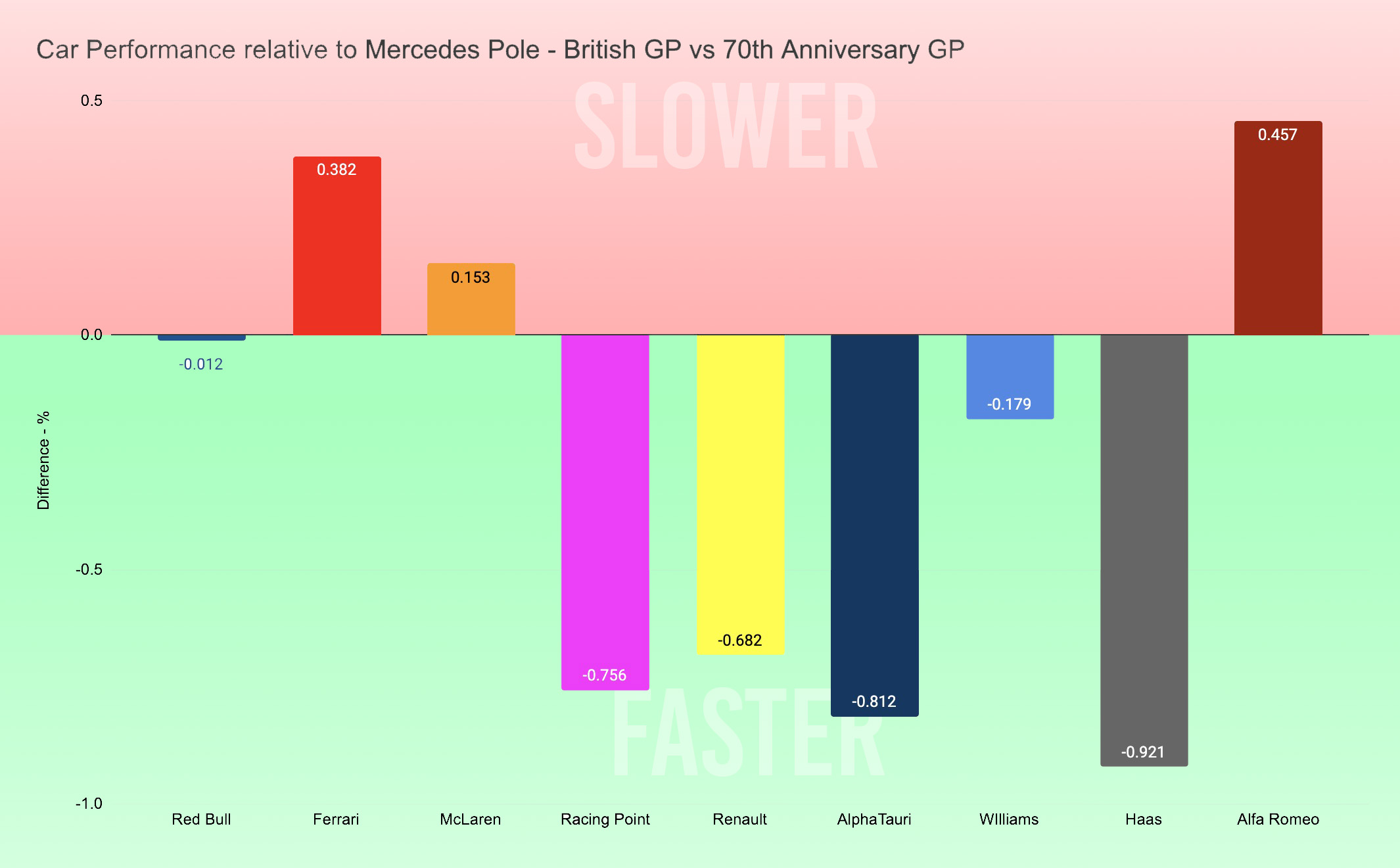 Racing Point went from the fourth-fastest car last week to the second-fastest. McLaren dropped from third-fastest to seventh, Ferrari – from second-fastest car in qualifying to sixth. Haas, Alpha Tauri, Racing Point and Renault made impressive gains. All in the space of seven days.
Racing Point went from the fourth-fastest car last week to the second-fastest. McLaren dropped from third-fastest to seventh, Ferrari – from second-fastest car in qualifying to sixth. Haas, Alpha Tauri, Racing Point and Renault made impressive gains. All in the space of seven days.
What were the factors determining both the slower lap times and those swings?
Tyres?
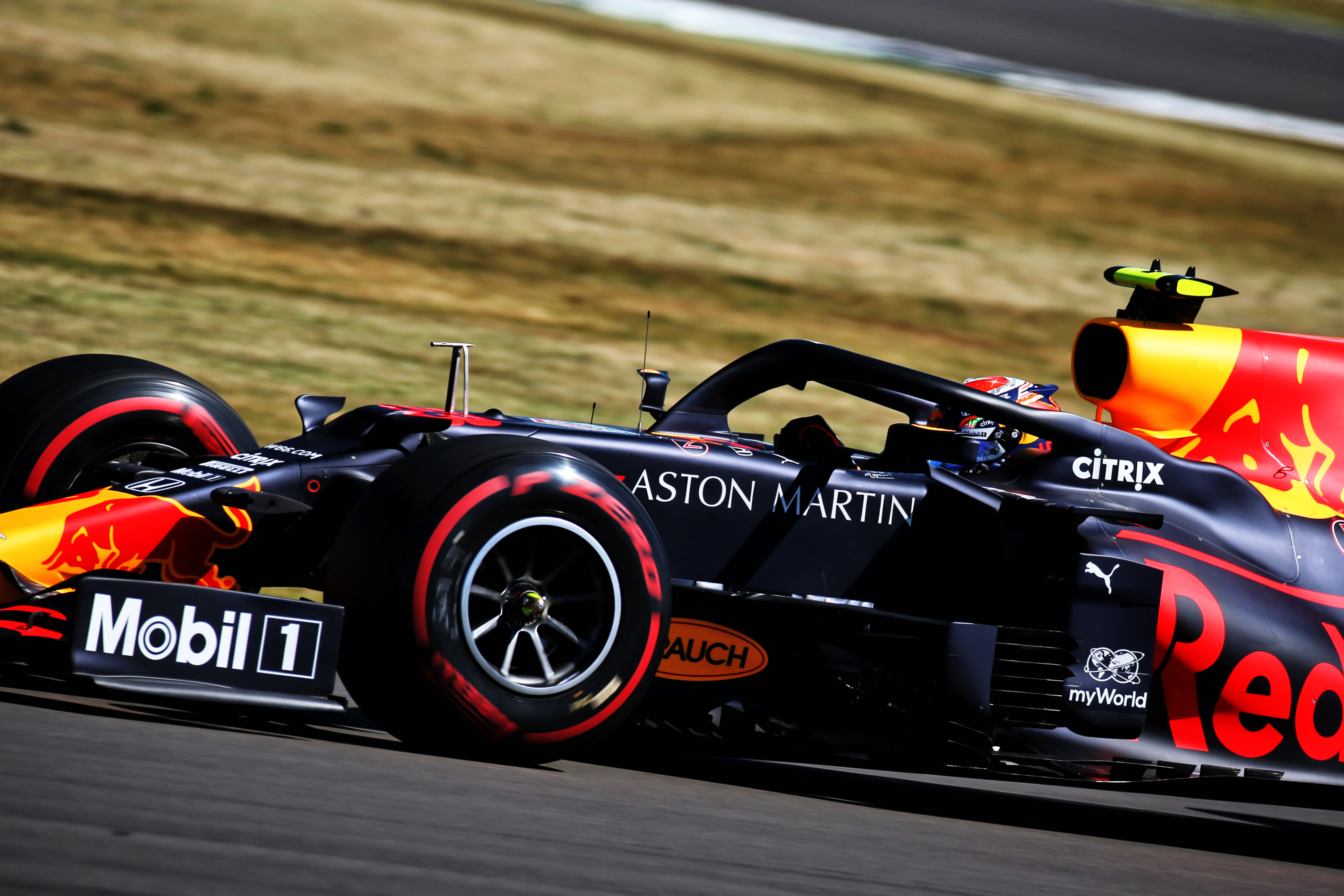 There’s probably way less to this factor than meets the eye in explaining the slower times. There was very little difference in laptime potential between the C4 (soft) and C3 (medium) over the lap this weekend, just in the way that laptime was delivered. The medium was last week’s soft – so there’s no obvious tyre explanation of why the times were slower, not even a track temperature-related one: the track was slightly hotter than last week in Q1 and Q2 – but about the same in Q3.
There’s probably way less to this factor than meets the eye in explaining the slower times. There was very little difference in laptime potential between the C4 (soft) and C3 (medium) over the lap this weekend, just in the way that laptime was delivered. The medium was last week’s soft – so there’s no obvious tyre explanation of why the times were slower, not even a track temperature-related one: the track was slightly hotter than last week in Q1 and Q2 – but about the same in Q3.
“There’s almost nothing between them,” said Renault’s Alan Permane. “That isn’t uncommon round here even going back years ago, when I was race engineering. The soft would have a bit more grip in the low-speed and be a bit unstable in the high-speed and vice versa. So [the difference] is between not much and nothing.”
The soft was generally faster in the first part of the lap but by the time the car got to Maggots/Becketts it was generally overheating and slower in sector 3.
But the extent to which this was true varied between the cars and this goes some way to explaining the changed competitive order – specifically Ferrari’s loss of performance relative to pole. Although every one of the top 10 got through Q2 on the more durable medium tyre, in Q3 there was a split choice between the soft and medium.
Which is where Ferrari came a cropper, as its sporting director Laurent Mekies explained: “We basically couldn’t finish the lap with the [soft] tyre in good enough condition, which is something we’re less good at than the other guys. I think on medium the picture is much closer to the other cars. We’ve done a very aggressive choice with the downforce level, both last week and this. It seemed to give us something last week, but it’s probably a touch too tricky with the softest compound.”
Alex Albon suffered too. “I went quicker in Q3 on a used set of mediums on my first runs than I could manage on a new set of softs on my last run. When I went on the soft I just didn’t have the grip. So, obviously, there are some teams can be quick on the medium and quick on the softs.” That said, Max Verstappen in the same car found 0.256s when he made the switch to soft.
Wind?
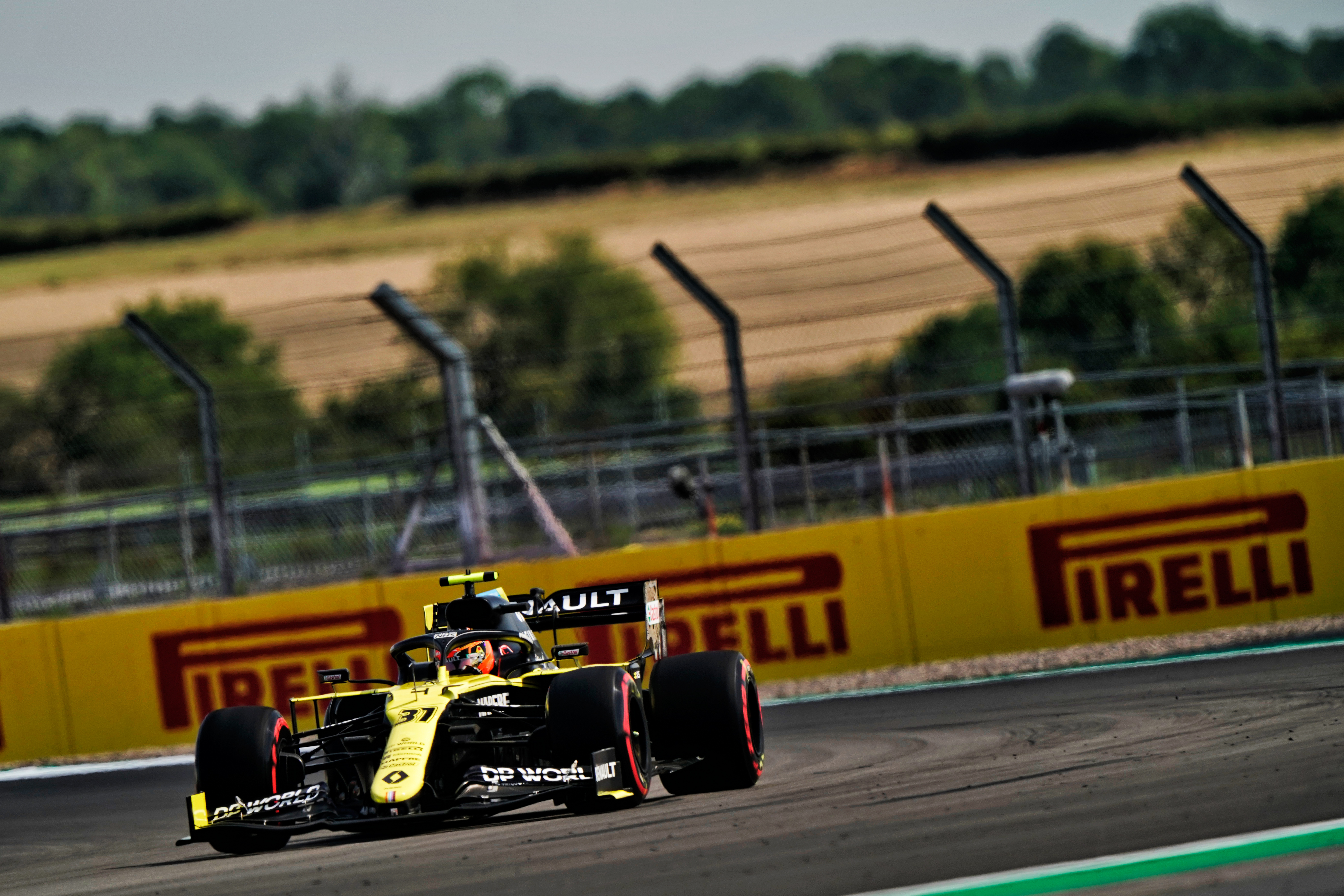 A much more likely culprit than tyres for the slower times is the capricious Silverstone wind. “On a very quick analysis, because of the wind direction, we’ve lost three tenths,” said Permane, “and everyone else has lost an average of six tenths.”
A much more likely culprit than tyres for the slower times is the capricious Silverstone wind. “On a very quick analysis, because of the wind direction, we’ve lost three tenths,” said Permane, “and everyone else has lost an average of six tenths.”
“Everyone’s struggling with the wind out there,” reported Alex Albon. “Some cars are more sensitive than others. Looks like Renault seems pretty good in the wind. It’s tricky especially when the car is moving around; a bit of tail wind is never fun.
“Today, compared to last weekend if you look at where the wind is, it’s basically the worst kind of wind you can get, because every corner is a tailwind. It goes through Turn 4, 6, 7, and then all the way through the high-speed stuff up to Turn 15 is all a tailwind. Which isn’t fun and the wind was picking up through quali so it just becomes trickier and trickier to drive.”
Set-up/wing level?
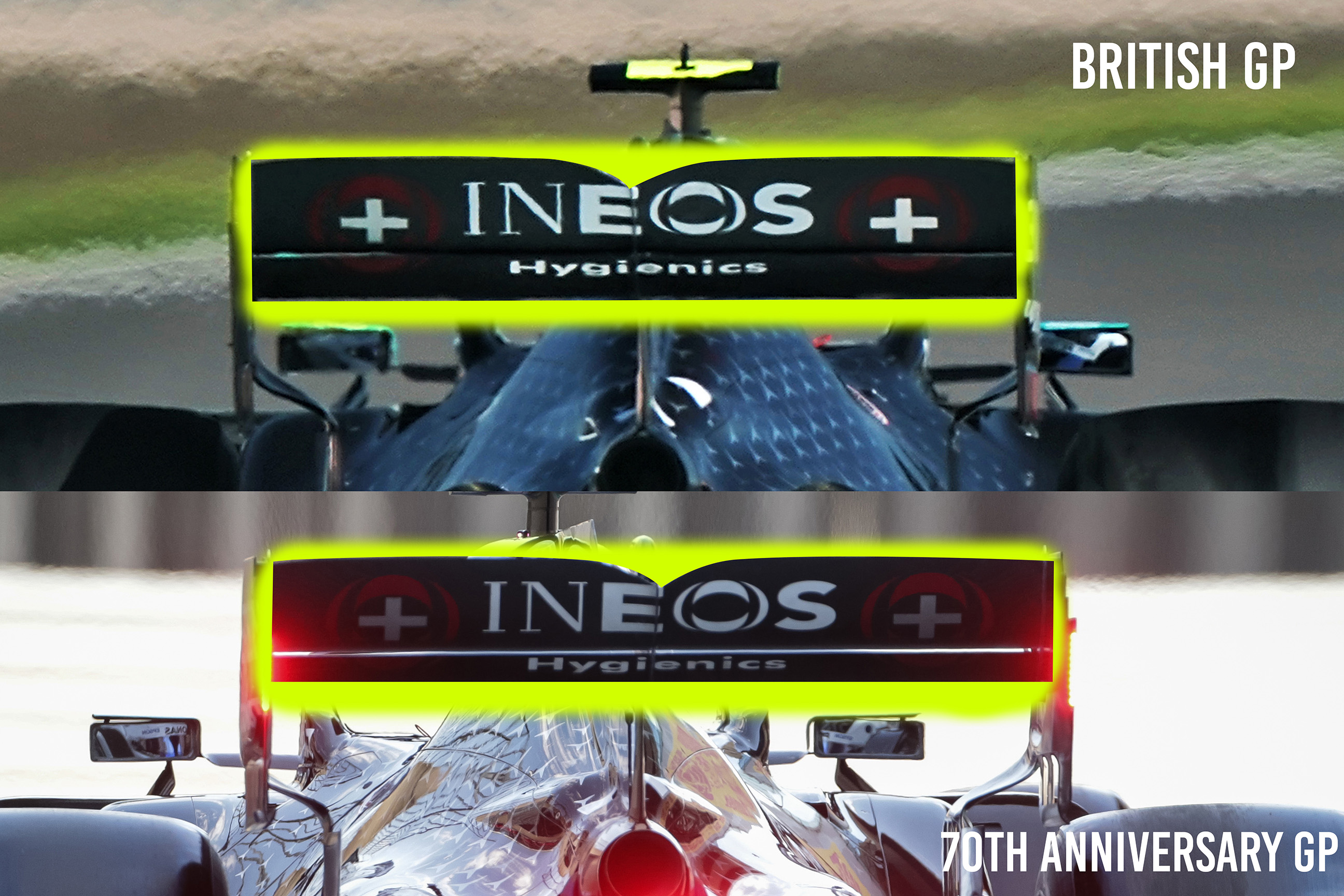
Ferrari’s quite radically low wing level at the British Grand Prix was a choice brought on by its power deficit at a track which, since the 2017 generation of cars, has become more about low drag than downforce. But the extent to which that’s true with this year’s cars seems even greater. Ferrari, as recounted, retained that low wing level.
But several others – notably Mercedes, Red Bull, Racing Point and Renault – followed Ferrari’s path for this weekend and went even lower than they already were.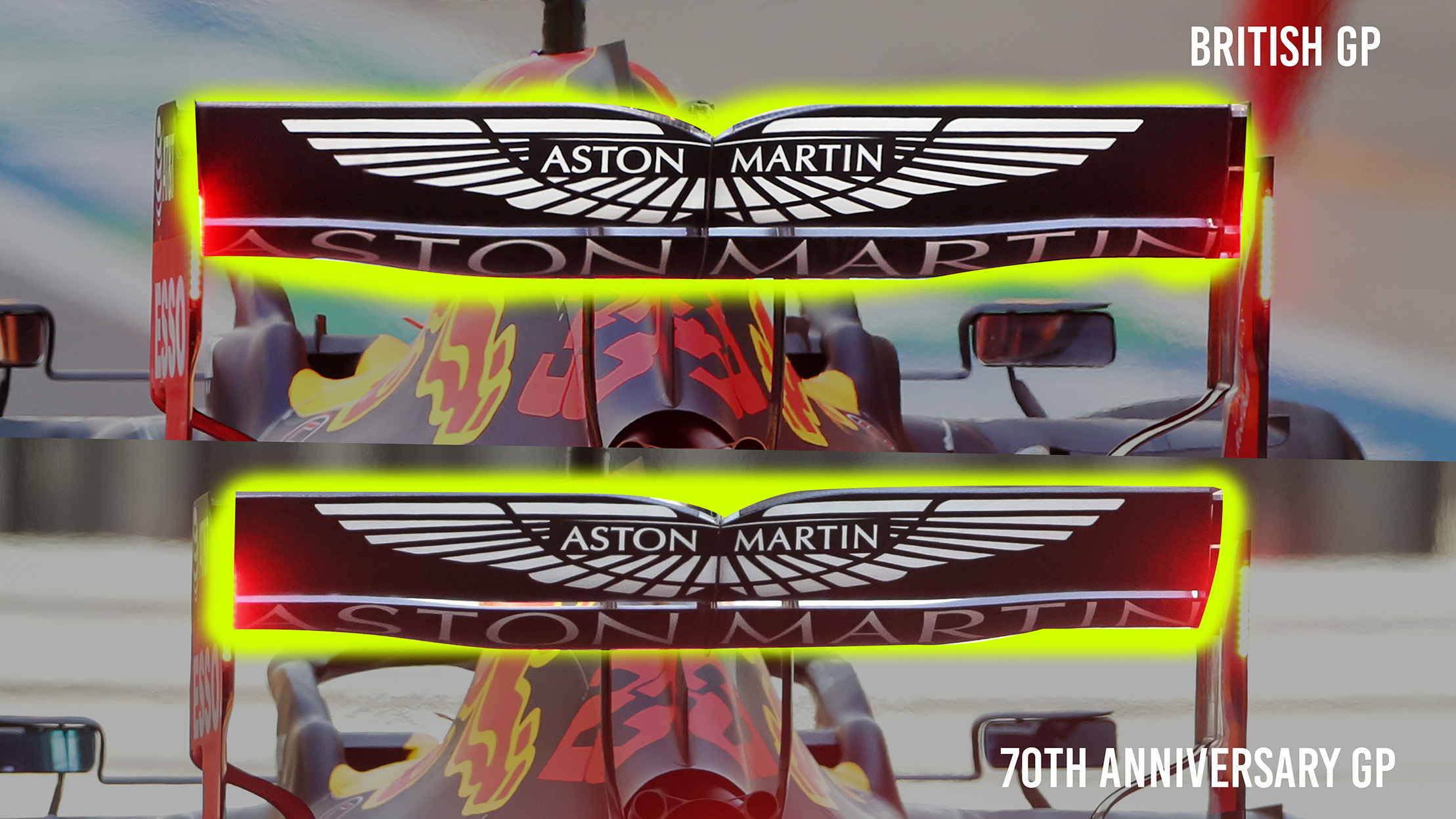
“Yes, I’d say we’re nearer our optimum level of downforce now,” said Renault’s Permane, whose driver Daniel Ricciardo qualified fifth. But it was about more than just that. The set-up around that wing level was much better than last week. That much was evident in the way Ricciardo was able to take Copse comfortably flat, whereas it had been an edgy adventure last week to do so despite the bigger wing.
“It’s just some set-up we’ve done on the car,” he said. “It’s not even as far as new bits but just different kind of tools we’ve used this weekend… that’s certainly the area which is working well. So through the high-speed it feels great. It’s still not a Mercedes in the high-speed but being flat through Turn 9 [Copse] is a start.”
Racing Point ran last week with an old-school Silverstone big wing, which was almost certainly a big part of why it wasn’t as competitive as expected.
Tech director Andy Green accepts the team got it wrong last week. “I think we definitely went to school on what we learned last weekend when we were overprotective of the tyres and even as we set up for Sunday afternoon, we did the best that we could to look after the tyres.
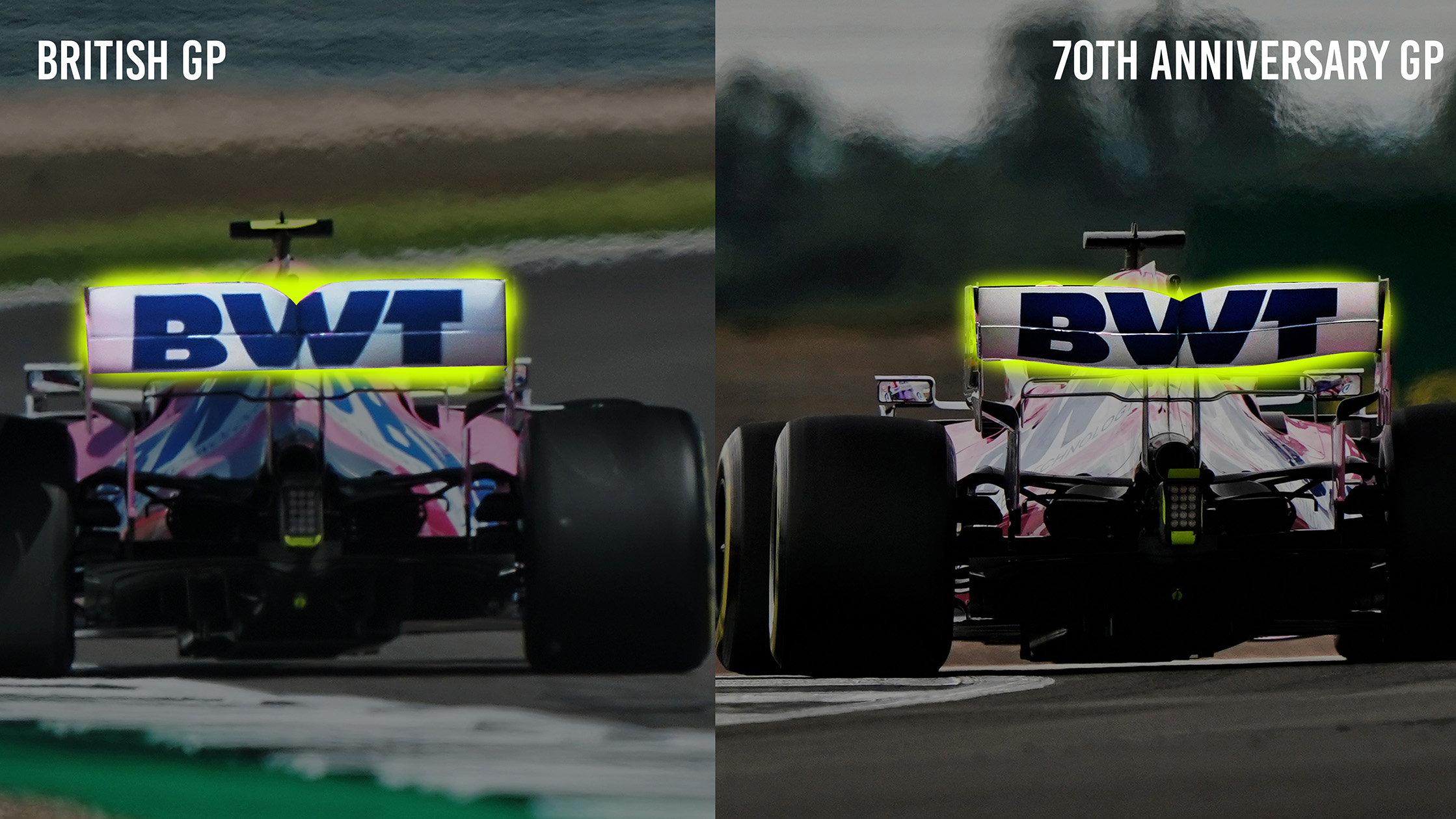
“But they don’t need as much looking after as that and you can run with less downforce and they still perform. That’s what we found this weekend. We also made a few set-up changes as well to adjust the corners where we were weaker, moving the bias away from the high-speed a bit more to low-speed.
“That was all done in the simulator in the days running up and the drivers were much happier with the car. It’s a bit closer to where we were expecting to be going into first Silverstone. I think there were lots of things, it wasn’t just downforce – there were a lot of set-up changes as well.” That and Nico Hulkenberg getting more attuned to the car as he built up the miles.

